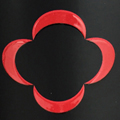Vinho Verde Tasting
by
Terry Sullivan
 Summary: The Vinho Verde wine region offers more than the popular varietal grape Alvarinho. Our wine journey in Portugal took us to the Vinho Verde building in Porto where we enjoyed a presentation about the region, grape varieties and tasting of six wines.
Summary: The Vinho Verde wine region offers more than the popular varietal grape Alvarinho. Our wine journey in Portugal took us to the Vinho Verde building in Porto where we enjoyed a presentation about the region, grape varieties and tasting of six wines.
In Porto, the Commission of Viticulture for the Region of Vinho Verde has a building where staff regulates and markets wines from the region. We visited the site and had a tasting of several wines. The elegant building was known as the Silva Monteiro Palace, built in the mid-1800s by António da Silva Monteiro as a residence for his family. The 1st Viscount and Count of Silva Monteiro was a trader in both Porto and Brazil, a businessman and philanthropist in the city of Porto. The gardens behind the palace are terraced and include a few grapevines, trees, shrubs, flowers and a large water fountain. The area overlooks the riverfront of Porto, the Douro River and Vila Nova de Gaia. You can see several Port Lodges from the gardens.
We were taken to a large room for the tasting. Each place setting had several wine glasses. A short presentation was made by a member the Vinho Verde staff. We learned during the presentation that the name Vinho Verde comes from the green color of the landscape in the Northwest section of Portugal. Wine in this area was mentioned by the Romans Seneca and Pliny. The Vinho Verde region accounts for 16.8% of wine production in Portugal.
The Wines
All the wines we tasted were food friendly. They can make a wonderful apéritif or paired with cold dishes, salads, fish, seafood, white meat and Oriental foods.
 The 2016 Quinta de Linhares Colheita Seleccionada was crafted from Avesso, Loureiro and Trajadura grapes. The yellow colored wine had 12% alcohol. There was citrus and peach on the aroma, while the taste offered citrus, peach and mineral. The finish was very crisp and fruity. There was a faint hint of salt on the aftertaste.
The 2016 Quinta de Linhares Colheita Seleccionada was crafted from Avesso, Loureiro and Trajadura grapes. The yellow colored wine had 12% alcohol. There was citrus and peach on the aroma, while the taste offered citrus, peach and mineral. The finish was very crisp and fruity. There was a faint hint of salt on the aftertaste.
The 2016 Casa da Senra Loureiro was made with entirely Loureiro grapes. The light yellow colored wine was 12% alcohol. The aroma offered tropical fruits and citrus. The taste had citrus, mango and some floral notes. The finish was crisp with a bit of salt on the aftertaste.
The 2016 S. Caetano Arinto was made with Arinto. The wine had a yellow color and had citrus and apple on the aroma and taste. The wine offered a light crispy finish.
The 2016 Opção Avesso was made with Avesso grapes. The yellow colored wine had 13% alcohol. The aroma was reminiscent of peaches. The taste was peaches with floral notes. The wine had a soft mouthfeel. The finish was slightly crisp and fruity.
The 2016 Deu Alvarinho was composed of Alvarinho grapes. The wine had a yellow color with 13% alcohol. The aroma had tropical fruits, peach and citrus. The taste was reminiscent of peaches, grapefruit, citrus and mineral. The wine had an oily mouthfeel. The finish was crisp and fruity. This is one of the best selling wines from the region with a price around six euros.
Our last wine was a 2016 Muralhas de Monção Rose. The salmon colored wine had 11% alcohol. The aroma and taste had red berry fruit. The finish was very crispy with red berry fruit.
Fado Concert
After our wine tasting, our group enjoyed a private Fado concert by Rita Ruivo. Fado is a music genre unique to Portugal. Fado music is on the UNESCO list of Intangible Cultural Heritage. Rita Ruivo ventured into the world of Fado music in 2012. Although the lyrics were in Portuguese, the emotion in Rita’s voice was unmistakable. Rita explained what each song was about, generally the realities of life.

Article written May 2018.
Please support the following.
 |
||||
|
Portugal |
Spain and Portugal |
SmoothRed London, England, United Kingdom |

